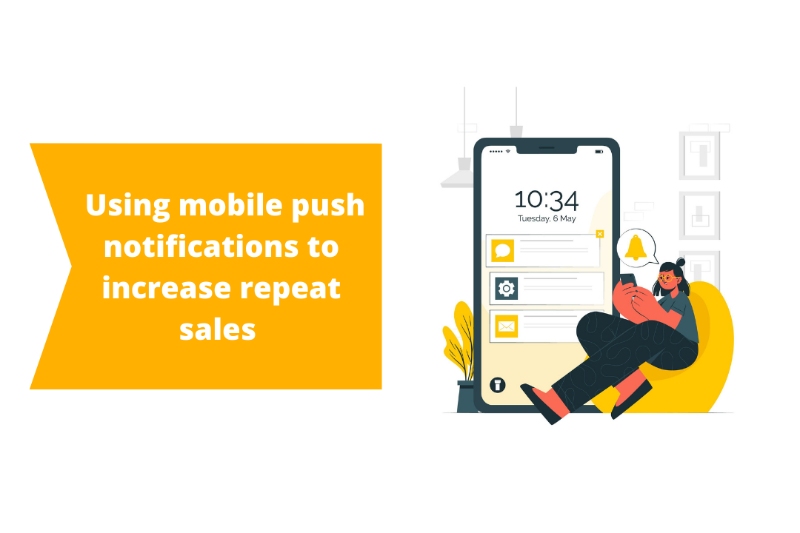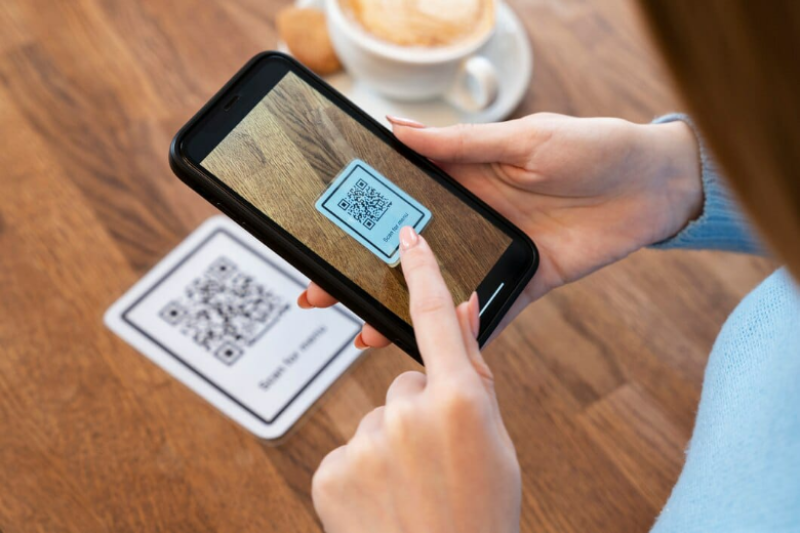
Mobile push notifications have become a popular way for businesses to engage with customers. And with good reason: research shows that 82% of consumers prefer to receive mobile messages, and 65% are more likely to purchase after receiving a notification.
But if you’re not using the right strategy for your business, it can be difficult to generate results with push notifications. Mobile push notifications are an effective way to reach your customers, but you need to make sure that you're doing it right. Here are some tips for using mobile push notifications to increase repeat sales.
How to use mobile push notifications to increase repeat sales -
Contents
- Get your prospects to opt-in to receive push notifications
- Create a well-crafted message basic structure that you use for all your push notifications
- Use simple, clear, and short language when crafting messages to send as a push notification
- Segment and target based on their location - e.g., notifying users of nearby offers and events
- Segment message delivery based on the time of day
Get your prospects to opt-in to receive push notifications
The first step in using mobile push notifications is getting your prospects to opt in to receive them. The best way to do this is by offering them something of value in return for their contact information. This could be anything from a discount on their next purchase or trial period for new products, to exclusive content on your blog or social media pages.
Once you have their contact information, you can begin sending them personalized messages based on their buying patterns and interests. An example would be if someone buys one of your products, they might receive an offer for another product that complements it — like a new accessory or replacement parts for broken ones. Once they've permitted you, you can send them specific messages at different points in the buying cycle to help increase conversion rates and get more repeat sales.
Create a well-crafted message basic structure that you use for all your push notifications
Mobile push notifications are an extremely effective way to get your customers to re-engage with your business.
The key is to create a well-crafted message basic structure that you use for all your push notifications. This way, your customers know what to expect from each type of message and can easily recognize the difference between them.
Here are some tips to help you do just that:
- Define the purpose of your mobile push notifications
- Use different colours for different types of messages
- Use icons or images in addition to text
- Keep messages short and concise
Use simple, clear, and short language when crafting messages to send as a push notification
Mobile push notifications are a great way to keep your customers engaged. They're also a great way to get them back into your store.
But what if you're not sure how to craft the right message?
Here are some tips for creating effective mobile push notifications:
Use simple, straightforward, and short language when crafting messages to send as a push notification. The goal is to get people excited about something without overwhelming them with information.
Consider using an image of the product that you're promoting alongside the text of your message. For example, if you're promoting a sale on women's swimsuits, include an image of one or two suits in your message. This will help convey the value of what you're offering and make it easier for people to understand what they'll be getting if they click through.
Be sure that your message includes a call to action — one that lets users know exactly what they'll get if they click through to your website or app. For example, instead of saying "Get 20% off all swimsuits," say "20% off all swimsuits."
Use simple, clear, and short language when crafting messages to send as a push notification. It’s tempting to use long sentences and complex language in an attempt to sound professional, but this is more likely to confuse your customer than inform them. Think about how you would speak to someone in person if you needed them to do something. If you wouldn’t say it that way, don’t write it that way either!
Don’t send too many messages at once. You want your customers to read each message carefully and act on it when they have time — not get overwhelmed with information they don’t need right now. Send no more than two or three messages per day and make sure they are relevant before sending them out again.
Segment and target based on their location - e.g., notifying users of nearby offers and events
By segmenting by demographics like gender and age or by past purchases or actions taken within the app (such as commenting on an item), you can send more relevant messages that drive engagement among those most likely to respond positively.
Knowing who you’re targeting with your mobile push notifications is important. There are several ways to do this, including:
Location-based targeting:
Send messages based on where customers are located. If they’re near a competitor, send them a message about how much better your business is than theirs. Use location-based triggers so you only push messages when people are near your store or business location (or other places where you want).
Interest-based targeting:
Send messages based on what customers like or don’t like — such as products they browse online or videos they watch on social media platforms like Instagram and Facebook. This lets you target specific groups with relevant messages that will drive them back into stores or online shopping carts.
Segment message delivery based on the time of day
Mobile push notifications can be used as an incentive for customers who are on the fence about making a purchase. If someone has been thinking about buying from you but hasn't made a decision yet, consider sending them a message with an offer that expires soon or another reason why they should buy now before it's too late. This will help build urgency around the purchase and encourage them to act now instead of waiting until later before deciding whether or not to make the purchase.
Segment message delivery based on the time of day. If you know your customer is most likely to open their phone during work hours, send them an offer there. If they're more likely to open their phone after work and on weekends, send them an offer at those times. This will help you increase the number of people who respond to your offers by making them more relevant.
Send offers that align with what people have been looking at or buying recently. If someone was browsing a pair of shoes last week but hasn’t purchased them yet, send them an offer for those shoes again — maybe with a discount or special deal that makes it more tempting to buy now instead of later when they have time to shop around again.
If you're not using push notifications to market your business, you're missing out on a huge opportunity. Push notifications are a powerful tool for customer retention and repeat sales.
Getting data of your customers is the first step to using mobile push notifications, but at a time when a large number of brands are dependent on marketplaces like Amazon to sell their products, how can your brand get data of your end customers?
NeuroWarranty is your one stop solution that can get you data of both your marketplace(Amazon) and reatil customers. Having worked with the leading consumer brands, NeuroWarranty has helped brands like Syska increase their repeat sales by up to 180%, to know how NeuroWarranty can bring you data of your Amazon and retail customers, Book a demo now.
To know more about how your brand can use email marketing and increase repeat sales by up to 180%, read this blog on the comprehensive guide to increasing repeat sales.


